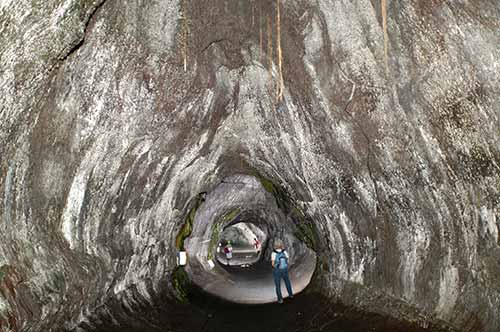The best ways to experience this Big Island national park.
On a visit to the Big Island a wonderful way to truly experience the power of nature is to visit Hawaii Volcanoes National Park. Located 30 miles southwest of Hilo, the park features one of the most active volcanoes in the world, Kilauea. It’s been coined, “the world’s only drive-in volcano,” because you can usually get up close to Kilauea from the comfort of your vehicle, though I’d recommend also hiking a bit to truly see the terrain. The Big Island’s terrain is constantly changing because of Kilauea, which has been spewing lava since 1983. Lava meets the sea in this Big Island national park, and you can take stunning photos here.
Crater Rim Drive is an approximately 11-mile route around Kilauea’s Caldera, taking you past some of the top things to see in the park including steam vents, Thurston Lava Tube and the Kilauea overlook. If you look out over the caldera, it might seem like its settled, but that can change in an instant. Make sure to drive further down to the ocean near the end of Chain of Craters Road to see the Sea Arch and enjoy the pretty rainbows that form when the ocean crashes against the volcanic shore.

The best way to see actual lava flows on the Big Island is from the air. Blue Hawaiian Helicopters, which has been operating since the 1980’s, offers their Circle of Fire plus Waterfalls 50-minute tour departing from Hilo starting at just over $200 USD if you book online and in advance.
Definitely rent a car to explore the Big Island and, if time allows, stay both along the stunning Kohala Coast and Hilo. Fly into either Hilo or Kona to enjoy the all that the Big Island has to offer.
Tour Hawaii’s Big Island, including Hawaii Volcanoes National Park, horses in Waimea, and the Valley of the Kings, Waipi’o Valley with host Darley Newman and the below special video. Hawaii is a popular vacation destination for a reason and these beautiful images were filmed by Darley’s expert team, including photographer Greg Barna, who has won multiple Daytime Emmy Awards for his efforts.




